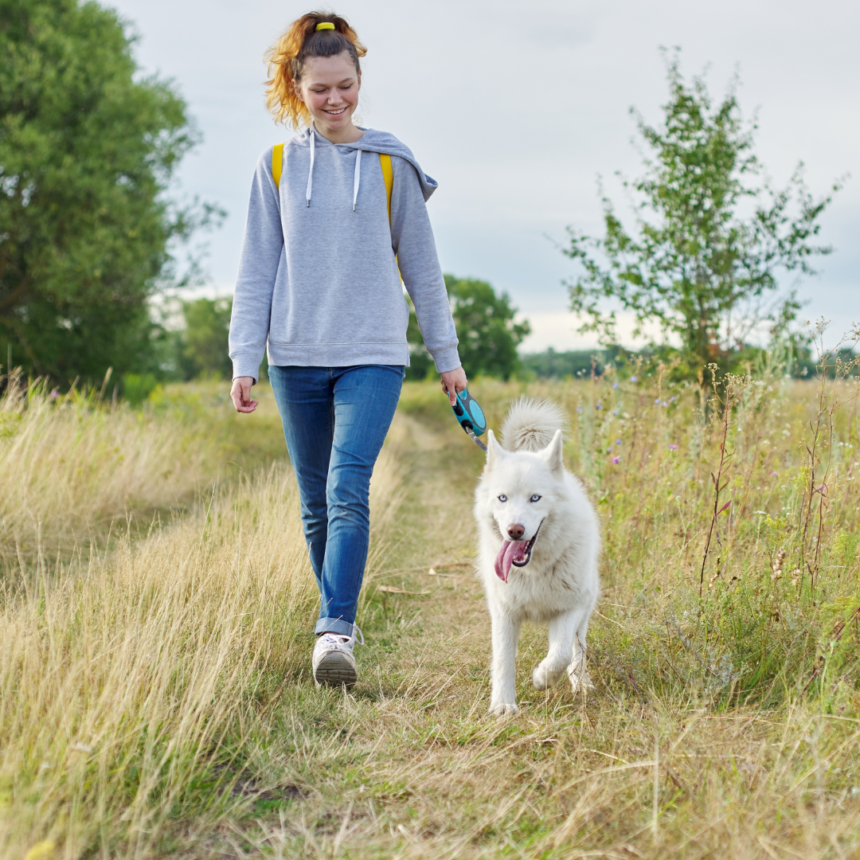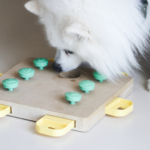Introduction
Mastering the art of loose leash walking is more than a skill; it’s a pathway to enjoyable and stress-free strolls with your canine companion. In this guide, we’ll delve into the importance of loose leash walking, addressing common challenges faced by dog owners, and providing practical solutions for a more harmonious and joyous walking experience.
The Importance of Loose Leash Walking
Loose leash walking is a fundamental skill that holds significant importance in the well-being of both dogs and their owners. Beyond the act of walking, it serves as a cornerstone for fostering a positive relationship and ensuring a safe and enjoyable experience for both parties involved. Understanding the importance of loose leash walking involves recognizing its multifaceted benefits.
One of the primary advantages is the enhancement of safety during walks. Dogs that walk calmly on a loose leash are less likely to engage in erratic behavior or sudden pulls, reducing the risk of injuries for both the dog and the owner. This skill becomes especially crucial in busy urban environments or during encounters with other animals.
However, the journey to achieving loose leash walking can be accompanied by challenges. Common issues include pulling, excessive excitement, or easily getting distracted. These behaviors often stem from a lack of training, insufficient mental stimulation, or a dog’s natural inclination to explore their surroundings.
To address these challenges, a positive reinforcement approach proves to be effective. This involves rewarding desired behaviors, such as walking calmly beside the owner, and redirecting attention when distractions arise. Consistency in training and reinforcing positive actions can significantly contribute to a dog’s understanding of proper leash etiquette.
Additionally, incorporating mental stimulation into walks is beneficial. Engaging a dog’s mind through activities like varying walking routes or integrating brief training sessions not only expends excess energy but also reinforces the desired behavior of walking on a loose leash.
Preparing for the Walk
Preparing your dog for a loose leash walk is a fundamental aspect of cultivating good walking behavior and fostering an enjoyable experience for both you and your furry friend. This pre-walk preparation is essential to encourage loose leash walking and discourage pulling, creating a more relaxed and controlled outing.
One potential issue dog owners may encounter is the natural instinct of dogs to pull on the leash due to excitement or curiosity. Addressing this challenge involves implementing a pre-walk routine that focuses on reinforcing loose leash behavior. Engaging in brief obedience training sessions before the walk can help your dog understand and respond to the desired walking behavior.
Consistency is key when preparing your dog for a loose leash walk. Dogs thrive on routine, and establishing a predictable pre-walk ritual contributes to a sense of calm and readiness. This routine could involve practicing loose leash walking in a controlled environment, reinforcing positive behavior with treats or praise.
Incorporating the use of appropriate equipment can also aid in preparing your dog for a loose leash walk. A well-fitted harness or head halter provides better control and reduces the likelihood of pulling. Subtly referencing resources such as training guides or instructional videos on loose leash walking techniques can be beneficial for dog owners seeking additional guidance.
Techniques for Effective Training
Training techniques to encourage loose leash walking for dogs are crucial for fostering positive behavior during walks and ensuring a pleasant experience for both you and your canine companion. Understanding the principles of effective training can help address common challenges associated with leash pulling.
One common issue is dogs pulling on the leash due to excitement, curiosity, or a desire to explore their surroundings. To overcome this challenge, incorporating positive reinforcement techniques is essential. Rewarding your dog with treats, praise, or toys when they maintain a loose leash helps reinforce the desired behavior. Subtle references to positive reinforcement methods, such as clicker training or treat-based rewards, can guide dog owners toward effective training resources.
Consistency is key in training your dog to walk on a loose leash. Establishing a routine and consistently rewarding good behavior reinforces the association between walking calmly and positive outcomes. Consistent commands, such as “heel” or “easy,” help communicate your expectations to your dog during walks.
Another effective technique is the use of redirection. If your dog starts to pull, gently redirect their attention back to you. Subtly suggesting tools like no-pull harnesses or head halters can aid in redirecting your dog’s focus and minimizing pulling.
Addressing Common Challenges
Loose leash walking can be a delightful experience, but it often comes with its share of challenges. Addressing these common issues is crucial for fostering a positive walking routine with your dog.
One prevalent challenge is leash pulling. Dogs may pull due to excitement, distractions, or simply the desire to move ahead. To overcome this, gradual training with positive reinforcement is effective. Subtly referring to reward-based training methods or using tools like treat pouches for easy access to treats during walks can be beneficial.
Distractions pose another challenge during loose leash walking. Dogs may be drawn to other animals, scents, or even moving objects, causing them to lose focus. Encouraging dog owners to subtly incorporate commands like “leave it” and gradually expose their dogs to different environments during training helps build resilience to distractions.
Uneven pacing between dogs and their owners is a common issue. Dogs may lag behind or pull ahead, disrupting the harmony of the walk. Suggesting tools like adjustable leashes or techniques like changing directions can subtly guide owners in maintaining a consistent walking pace with their dogs.
Additionally, encountering other dogs or pedestrians can be challenging. Dogs may become overly excited or anxious, leading to pulling or erratic behavior. Subtle references to techniques such as desensitization, where dogs gradually get used to various stimuli, can be helpful in addressing this challenge.
Incorporating Enrichment and Mental Stimulation
Successfully mastering loose leash walking goes beyond physical exercise; mental stimulation and enrichment activities play a crucial role in achieving harmony during walks with your dog.
Mental stimulation is essential for keeping your dog engaged and focused. Lack of mental stimulation can lead to boredom, making dogs more prone to distractions and pulling. Encouraging dog owners to incorporate activities like puzzle toys or scent games subtly enhances their understanding of the mental aspect of loose leash walking.
One potential challenge is a dog’s tendency to become easily bored during walks. This boredom can manifest as increased sniffing, pulling, or disinterest. Suggesting a variety of mental stimulation tools, such as interactive toys or incorporating new routes, subtly addresses this challenge, making walks more enjoyable for both the dog and the owner.
Incorporating enrichment activities at home also contributes to successful loose leash walking. Dogs who engage in regular mental exercises tend to be more responsive and attentive during walks. Subtly suggesting activities like hide-and-seek with treats or using sensory items can provide owners with practical solutions to keep their dogs mentally stimulated.
Tools and Resources for Loose Leash Walking
When it comes to achieving successful loose leash walking with your dog, having the right tools and resources can make a significant difference. However, it’s important to understand the various options available and their potential impact on your walking experience.
One potential challenge is the overwhelming variety of tools on the market, from harnesses to leashes and collars. This abundance can confuse dog owners, making it challenging to choose the most suitable option. Subtly guiding owners towards understanding the purpose of different tools, such as no-pull harnesses or front-clip harnesses, can provide practical solutions based on the specific needs of their dog.
Another challenge is improper use of tools, leading to discomfort or potential harm to the dog. For instance, choke chains or prong collars, if not used correctly, can cause distress and injury. Providing subtle references to positive reinforcement tools like treat pouches or clickers can encourage dog owners to focus on reward-based training rather than relying solely on tools that may cause discomfort.
Additionally, dog owners may face the challenge of inconsistency in using tools, leading to confusion for the dog. Subtly suggesting resources like online training courses or books on loose leash walking techniques can empower owners to educate themselves and maintain consistency in their training methods.
Conclusion
Mastering the walk through loose leash walking is a transformative experience for both you and your furry friend. As you embark on this journey, remember that patience, consistency, and understanding are the keys to success. Enjoy the newfound harmony and connection that loose leash walking can bring to your daily strolls.









